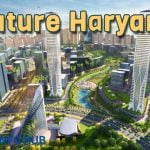Imagine traveling across California at speeds that rival jet planes, but without the hassle of airport security or traffic jams. That dream will be realized with the California High-Speed Rail (CHSR) project. This ambitious project promises to transform transportation in the Golden State, bringing cities closer together and offering a safer and quicker alternative to traditional travel methods.
Table of Contents
California High-Speed Rail Overview
- Length: 776 miles (1,249 km)
- No. of tracks: 2
- Cost: $106.2 billion (Phase 1)
- Track gauge: 4 ft 8+1⁄2 in (1,435 mm) standard gauge
- Top speed: 220 mph (350 km/h)
- Completion Date: 2030
About California High-Speed Rail
The California High-Speed Rail (CAHSR) project is a publicly funded high-speed rail system being built in the California state. Phase 1, planned to run approximately 494 miles (795 km) from San Francisco through the Central Valley to Los Angeles and Anaheim, is under construction. Phase 2 will extend the system 776 miles (1,249 km) north to Sacramento and south to San Diego.
A 2008 statewide vote approved the project to connect the state’s major urban areas and reduce inter-city travel times. Phase 1’s goal is a two-hour and forty-minute nonstop trip from San Francisco to Los Angeles, while the current Amtrak route on the San Joaquins takes approximately nine hours.
California High-Speed Rail Route
The aim of the California High-Speed Rail (CHSR) project is to connect major cities in California with a state-of-the-art high-speed train system. The primary objective of the project is to ease traffic congestion and reduce greenhouse gas emissions.
The project is split into two major phases:
Phase 1: The initial phase connects San Francisco to Los Angeles/Anaheim through the Central Valley. Key segments include:
- San Francisco to San Jose: Utilizing the existing Caltrain corridor with upgrades to accommodate high-speed trains.
- San Jose to Merced: This section will pass through the Pacheco Pass.
- Merced to Fresno: Connecting the agricultural heartland of California.
- Fresno to Bakersfield: Extending south through the Central Valley.
- Bakersfield to Palmdale: Crossing the Tehachapi Mountains.
- Palmdale to Burbank: Continuing into the Los Angeles Basin.
- Burbank to Los Angeles/Anaheim: Finalizing the connection to Southern California’s major urban centers.
Phase 2: The second phase will extend the system to additional regions, including:
- Merced to Sacramento: Connecting the state capital and providing a northern link.
- Los Angeles to San Diego: Extending the route further south along the Inland Empire.
California High-Speed Rail Route Map

California High-Speed Rail Progress
The project is divided into two major phases: Phase 1: San Francisco to Los Angeles through the Central Valley; Phase 2 is an extension of the system north from Merced to Sacramento and south from Los Angeles to the Inland Empire. The “Initial Operating Segment” (IOS) is targeted by the High-Speed Rail Authority to be completed by 2024. This is the 171-mile (275 km)-Central Valley portion of the Phase 1 route, of which 119 miles (192 km) are under active construction.
Construction of The first phase in the Central Valley was started in 2015. The project is being split due to limited funding. The state’s goal to have the 171-mile (275 km) Initial Operating Segment (IOS) connecting Merced and Bakersfield completed by 2024. The IOS is projected to begin revenue service between 2030 and 2033 as a self-contained high-speed rail system, replacing existing San Joaquins service south of Merced, at a cost of $28–35 billion. CAHSR trains on this segment will be the fastest in the US at 220 mph (350 km/h).
$11.2 billion will be spent from 2015 to December 2023, including 119 miles (192 km) of active construction and additions to existing rail lines in the Greater Los Angeles and San Francisco Bay Areas, where Phase 1 is planned to share tracks with conventional passenger trains. The government is also making preliminary plans, but not receiving sufficient funding, to connect the Bay Area and Los Angeles to the Central Valley section, which will have to cross several significant mountain passes. Completion of Phase 1 was estimated to cost $106.2 billion by 2024.
California High-Speed Rail Completion Time
Mercedes to Bakersfield: Currently, the initial operational segment is being built in the Central Valley, spanning approximately 171 miles. This portion is targeted for completion by 2029. This portion is often referred to as the “backbone” of the project.
According to current estimates, full completion of Phase 1, which includes the route from San Francisco to Los Angeles or Anaheim, will occur in the mid-2030s. However, this timeline may depend on the availability of funds, the progress of environmental clearances, and other project-related challenges.
The Phase 2 portion, which goes to Sacramento and San Diego, has no set timeline. This phase will be expanded upon once Phase 1 progresses significantly and additional funding and planning efforts are implemented.
Project Background
Due to California’s population growth projections, the country’s government had to improve its transportation system. An extensive study found that high-speed lines were economically, environment friendly, and socially beneficial, so one was proposed in 2000.
The first high-speed train project in the US was in California. The implementation plan was approved in August of 2005.
Through the American Recovery and Reinvestment Act (2009), in April 2009, the US national government committed $8 billion as an initial investment and $1 billion per year for five years to develop high-speed rail projects along ten major corridors.
In 2011, the decision to begin the project was made after extensive environmental studies and a referendum. In July 2012, the initial funding bill for the construction of 209 km of the project was signed.
In September 2012, the US Federal Railroad Administration approved 104.6 km of the project. Work has been divided into several smaller projects.
Project Financing
The high-speed train system has an estimated price tag of $68 billion. The project has only received partial state and federal/national funding ($2.6 billion in state bonds).
The federal government will provide 25 percent to 33 percent, or 10 percent to 12 percent, of the construction cost. An additional $4.5 billion to $7 billion will come from public-private partnership funding.
The Federal Railroad Administration and Environmental Protection Agency awarded the project more than $930 million in funding and grants through 2022.
It also received a $25 million grant under the Rebuilding American Infrastructure Sustainability and Equity program.
The authorization has reached $3.07 billion of the $8.2 billion the Biden-Harris administration announced in December 2023.
Project Contracts
In August 2014, ARCADIS US was awarded a $71.86 million contract to provide design and construction oversight for Construction Package 2-3.
Construction Package 2-3 includes widening over 96.5 km through the Fresno-Tulare-Kern County line.
The right-of-way engineering and survey contract was awarded to Chaudhary & Associates, Hernandez, Kroone & Associates, Mark Thomas and Company, O’Dell Engineering, and Quad Knopf.
In 2013, Madera and Fresno awarded a billion-dollar design-build contract for the first 46.6 km segment to the Tutor Perini/Zachry/Parsons joint venture. In January 2015 the Dragados/Flatiron/Shimmick JV was awarded the contract for the second 96.5 km segment.
In January 2013, PGH Wong Engineering and Harris & Associates were awarded project and construction management contracts for the 48 km section between Madera and Fresno.
The Parsons Brinckerhoff consortium was awarded a $700 million contract to provide integration, program delivery, operations, and management services. Network Rail Consulting and LeighFisher are consortium partners.
Jacobs Engineering won a $1.2 billion contract for design services for the second 96.5 km section of the project.
STV was tasked with creating environmental and engineering documentation for the areas between Burbank and Los Angeles, as well as Anaheim and Los Angeles. Senner Engineering is also a regional consultant, as well as SYS, HNTB, and T Y Lin International Projects.
Ferrovial Agroman was awarded a $442 million contract for Construction Package 4 in March 2016 to design and build a section of the California High-Speed Railway in the Central Valley. The contract also includes $107 million for the relocation of power, gas, and communications networks.
In 2018, Tutor-Perini/Zachry/Parsons, a design-build company, began work on the Cedar Viaduct.
Other contractors involved in the project include WSP, Stantec Consulting Services, Foster & Partners and Arup.










